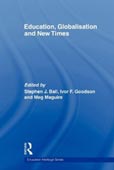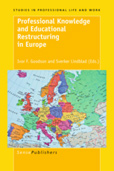Key Idea: Historical Periodisation
The dominant educational change theory of the moment tends to work with two interlinked lacunae. Firstly questions of time and historical periodisation are either ignored totally of glossed over in favour of the belief, contemporary possibility. Secondly the broad sweep of changes in economic and external context are subordinated to a belief in more internalistic, institutional change patterns.
For these reasons above all because change must be viewed historically our work has begun to focus on understanding change as located in historical periods. This approach is arrived at from the Annaliste methodology for understanding historical and social change. The Annalistes believed that change operated at three levels of time – long, medium and short and that these aspects of time interpenetrated in a complex manner. The most interesting points for inquiring and investigation particularly in educational study are when the different layers of historical time coincide. These periods were known by the Annalistes as ‘conjunctures’ as they applied to medium-term change. Nicholai Kondratief founded the Institute of Conjuncture in Moscow in 1920 and went onto study how long waves or cycles of economic change could be discerned. Kondratief pointed to how long wave conjunctures of 30 to 40 years duration could be discerned in past historical patterns. A new work on historical periodisation looks at these long waves of educational change to test if conjunctures can be discerned. In particular recent work has focused on the 1960s/1970s conjuncture and the conjuncture beginning in the mid 1990s when globalisation, privatisation and marketisation became dominant motifs for schooling.
Learning, Curriculum and Life Politics: the selected works of Ivor F. Goodson
Read about Historical Periodisation in the chapter: Long Waves of Educational Reform:In this book Ivor Goodson brings together 19 key writings in one place....
Professional Knowledge and Educational Restructuring in Europe
Read about Historical Periodisation in the chapter: Developing a Conceptual Framework for Understanding:- PERIODISATION Our work on studying generations as originally planned (see introduction) has led us to conceptualise historical periods of...
- Table 1. Periodisation in national contexts – published in the Profknow Report National case Periods Basis for...
- We enclose a summary chart of these perceptions. Although we have employed the term dictatorship in the Southern European cases, our national...
This study combines two kinds of narrative research: a study of the...


